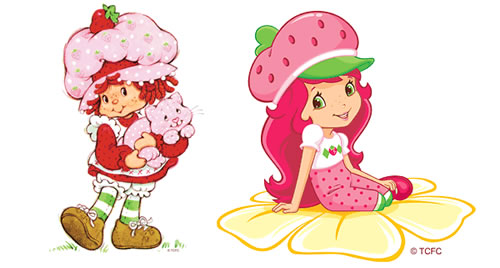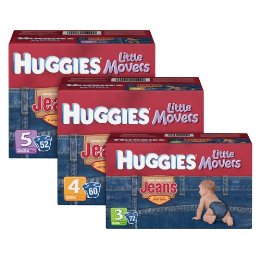Nervously Naming our Newborns

Sad, but true. According to the Wall Street Journal, sociologists and name researchers are seeing unprecedented levels of anxiety among parents trying to choose names for their children. While once a reflection of family tradition or cultural values, a child's name has now become a symbol of individual taste. The pressure is on! Knowing the name will become a lasting part of the child's identity, parents are turning to several resources before they commit to a final name for their baby's birth certificate.
Hiring a baby naming consultant or branding consultant has become a recent trend. Some of these "baby naming experts" offer phone consultations and even mathematical formulas. The consultants may analyze the phonetic elements, popularity and ethnic and linguistic origins, and can serve as an objective third party when parents are in disagreement about a name. Some parents even turn to research to find out how society reacts to different names. Albert Mehrabian Ph.D., a professor of psychology at UCLA, found that more common names elicit positive reactions, while unusual names typically result in negative responses. He has a popular article, "Baby Name Report Card: Beneficial and Harmful Baby Names" and is frequently cited in blogs for his knowledge regarding which names will lead to success vs. failure.
For parents that want to do their own exploring, nymbler.com is an interactive website where the user can input their favorite name and the site will generate popularity statistics as well as similar name options they may want to consider. Some parents go straight to the Social Security Administration website, which allows them to browse reliable data and see the most common names for each gender. The Social Security Administration site allows searches for past years as well as particular names.
Will parents every truly find unique names for their babies? Only time will tell!
Contributed by: Ashley Popham
Nobody better lay a finger on my Butterfinger!
It was a slogan made popular in the '90s by our favorite paper-bag head cartoon, Bart Simpson. Whether it was Nelson the bully, Homer, or a chocolate-craving high school student that will remain nameless, everyone wanted his crispety, crunchety, peanut buttery Butterfinger! Bart went to extreme measures to assure that no one swiped it but sadly, Bart and his iconic slogan were swipped from television in 2001.
Nestle Butterfinger has brought the slogan back in full force. You can now "train" with the Butterfinger Defense League to make certain no one is swiping your favorite peanut butter bar. Sir Mix-A-Lot serenades you with "I Like Big Butterfingers" while the League, comprised of Lou Ferrigno, Erik Estrada & Charisma Carpenter teach you how to defend yourself from muggers that might make off with your confectionary treats.
Campy? Yes. Do I have to go out immediately and buy a Butterfinger? Maybe. Good for at least one laugh out loud moment? Most definitely.
Contributed by: Jennifer Rodden
New Kotex Commercials

Need a good laugh? Be sure to check out the latest Kotex commercials. If you've already been caught off guard by them, you are not alone! The commercials mock feminine product commercials of the past that have typically featured women "practicing yoga in white spandex, riding white horses along the beach, or airborne in cheerleader outfits," according to New York Times writer Andrew Newman. The commercials feature women who ridicule the history of feminine product advertising, ironically including material from their own ad archives.
Kotex hopes this re-branding effort will help separate them from other feminine products. They recently launched their youth-driven U by Kotex line which features new black packaging and bright colors, signifying a revolution in feminine care. Their new slogan, "Time to break the cycle" enhances the humorous route they are taking to extend the brand's reach.
Contributed by: Ashley Popham
They're Back...Again
 ......................................................................................................................................................................
......................................................................................................................................................................
Very few fashion brands can say that they’ve stood the test of time, especially those that don’t constantly evolve to fit the ever changing trends. Well, the Ray-Ban Wayfarer is one brand that keeps coming back for more and has managed not to get a major face-lift over the decades.
Wayfarers have been manufactured by Ray-Ban since 1952. Since then, the brand has come and gone…and come and gone…and come again. Although very successful in the 1950s and 1960s, the brand’s popularity hit a slump in the 1970s. With the help of some primo product placement in the 1980s, the brand struck gold once again. You may recognize the brand from such movies as The Blues Brothers, The Breakfast Club, or the infamous showing in the hit, Risky Business.
Although successful in the 1980s, the brand hit another slump in the 1990s. During this time, the brand even underwent a redesign that proved to be unsuccessful. It wasn’t until the late 2000s that Ray-Ban noticed stars rocking some vintage Wayfarer frames, so they came to their senses and brought back the original design. Since then, the brand has found itself at a steady up and up.Read more
Strawberry Who?

My mom is a total pack rat. This is the woman who finally threw out maternity clothes upon the arrival of her first grandchild, my daughter. I was 30 at the time. And until very recently, I was embarrassed by this little quirk of hers. I made fun of her until my three year old daughter found out that her Mommy's cherished Strawberry Shortcake dolls had been carefully preserved in their little strawberry shaped carrying case for the last 20 odd years. The trick was to locate them among all the other assorted toys, books, dolls and clothing stored in the attic. And frankly, we've had a heat wave and I just didn't feel like stirring around in a hot attic.Read more
How Much Is YOUR Facebook Page Worth?
A question Social Media Management Company, Vitrue, raised by creating a Social Page Evaluator, a tool designed to “provide an assessment of a brand's Facebook Page value and the effectiveness of its social media efforts.” According to Vitrue, Starbuck’s has an annual page value of $20.7 million. The basic calculation starts by assigning a value (a conservative default of $5) to each “like”, but also takes into account the number of posts and the number of interactions. A smaller fan base can earn more than a larger one if the brand uses Facebook to its full potential. Skittles pot of gold, for example, has 1 million fewer connections than beverage giant Coke but is valued higher because of a greater frequency of posts. Can a Brand go too far? Absolutely. With 147 posts in the last month, ESPN has maxed out their page value at $4.8 million. To maximize page value, Vitrue suggests brands post up to twice per day, post photos and videos, and use Facebook tools like the "share" button.
So who do you “like”? What brands have you “shared” recently? Are you doing your part to contribute to the how much your favorite brand is worth?
Contributed by: Allison Jobes
Stirring Up Changes
Seattle's Best has joined the ranks of familiar companies updating their logo's look.
As with all new things, there are some pretty harsh words flying around about it. What's your opinion about the new design? Grab a cup of coffee, and tell us about it.
Contributed by: Jenna Wise
Arizona Boycotters Impact a New York Tea

......................................................................................................................................................................
AriZona Iced Tea is suffering the consequences of sharing a name with the southwestern state as people upset by Arizona's new irrigation law boycott the state as well as businesses based there. The ironic thing is that AriZona Beverage Company was founded in 1992 in Brooklyn, New York and maintains all operations in this northeastern state. I suppose the founders may now wish they had put a little more strategy behind their name generation instead of merely taking cues from their home decor.
Contributed by Allison Jobes
Jorts, Jeggings and Now... Jiapers?

......................................................................................................................................................................
So we've seen all jorts (jeans + shorts) and jeggings (jeans + leggings) but a jiaper?!? Jeepers! Must we subject our little ones to American's obsession with denim by putting them in a diaper disguised as a jean brief? According to Huggies (and 4 enthusiastic mothers' reviews on target.com) we should. Would you dress your child in Huggie's Little Movers Jeans? Have you contributed to the product's out of stock status on target.com? Would you?
Contributed by Allison Jobes
Happy 50th Anniversary!!
The pill. No, not a pill, but THE pill. The pill that sexually revolutionized women and the control over their bodies. The pill that wrapped itself in religious dilemma and political controversy. The pill that to this day still raises concerns over morality and safety.
This year marks the 50th anniversary of this medicinal wonder. Often misunderstood, this hormonal remedy has walked a littered road of controversial backtalk and revolutionary movements. Therefore, like most things taboo, interesting, or just pretty, it has earned itself a Time magazine cover, adequately accessorized with a very detailed and fascinating article. I mean, I read the entire thing.
Whether you’re for it, against it, on it, or a boy, this article gives an intriguing outlook about the history of birth control as a concept, how it transformed into a drug, and ultimately how it became a way of life for many women...and, of course, the chaos that shadowed it.
Check out the Time article here, and leave your thoughts/feelings below.
FYI, today roughly 100 million women around the world use the pill.
Contributed by: Keri Lynch
